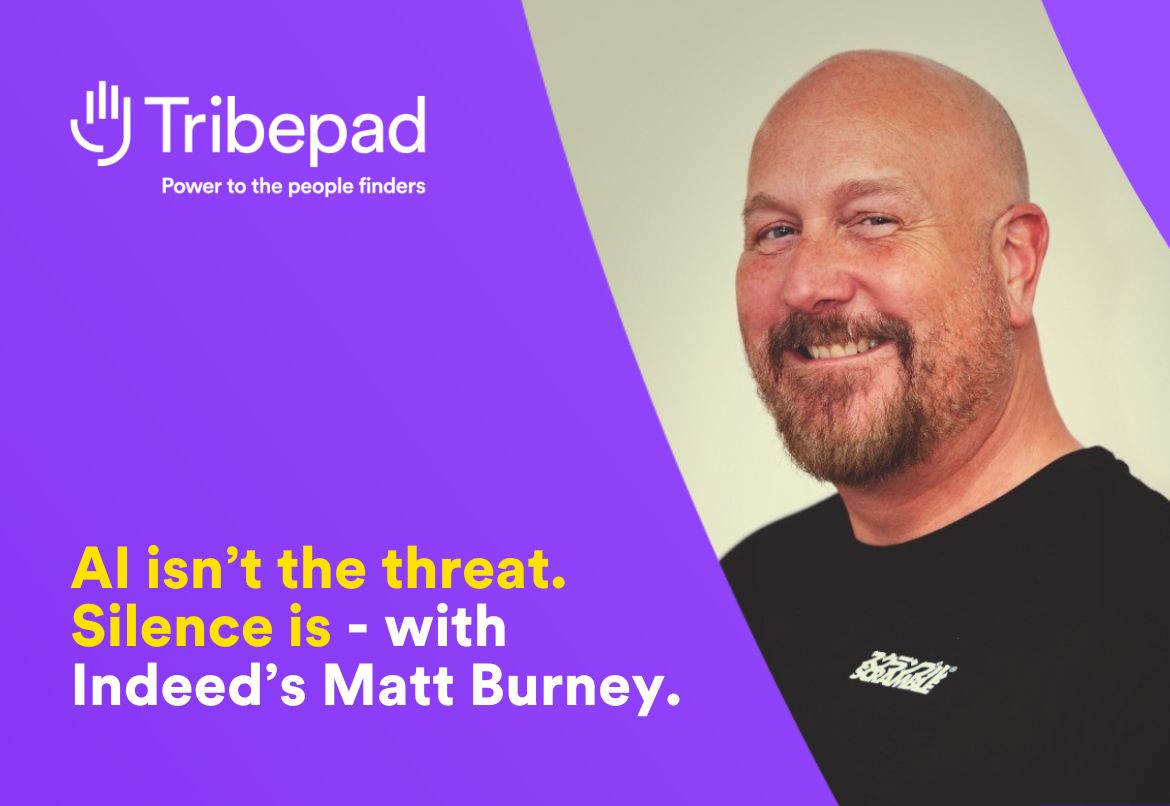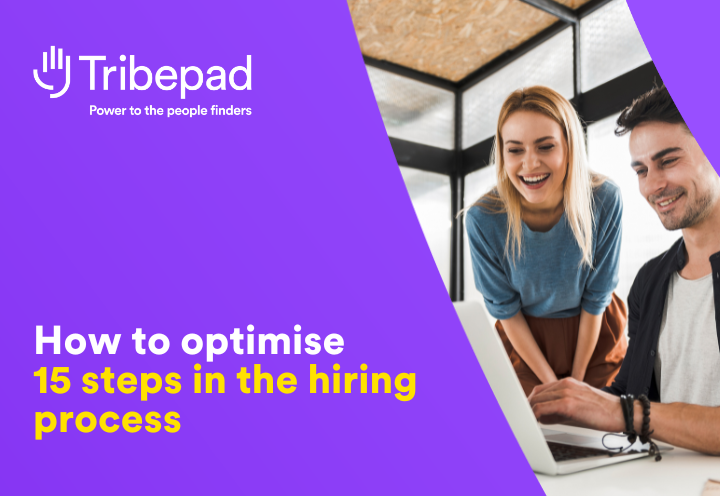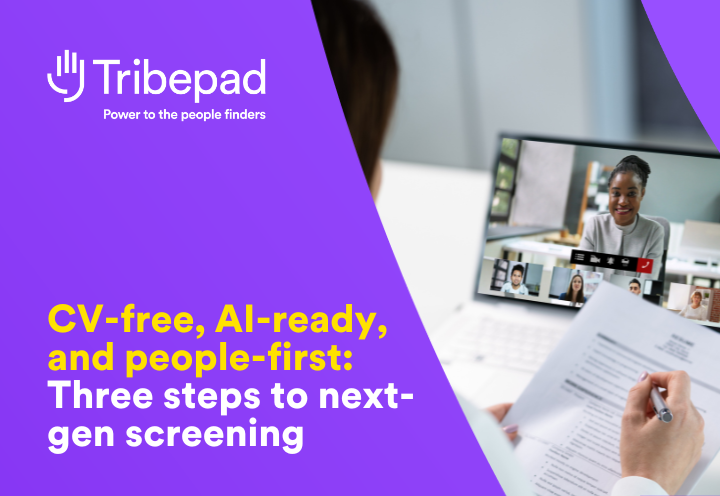Recruiters today are adrift in what Estelle McCartney, CEO at Arctic Shores, calls a “sea of sameness”, driven by widespread candidate AI use.
- Sea because the volume of CVs has skyrocketed as candidates can now spin-up and submit CVs in seconds.
- Sameness because similar tools generate similar results, losing individuality for the sake of clinical optimisation.
Recruiters who were already neck-deep in water are staring at an impending tidal wave – and dry land feels a long way off.
So… how can recruiters respond? For Episode 11 of The View, we spoke to Arctic Shores’ Estelle about just that. Read our takeaways below (or watch the webinar for the full story).
How can recruiters adapt to the AI-enabled candidate?
Arctic Shores’ The AI-enabled candidate in 2024-25 report shows AI adoption isn’t getting back in the box:
- 88% of Early Careers candidates use AI tools every week
- 86% describe themselves as proficient users of AI
- 59% use or plan to use AI in the recruitment process
- Only 9% of candidates see AI as cheating the system
So what can recruiters do? Let’s explore the options.
Deter AI use
The theory:
AI is causing problems — deterring AI use might solve those problems and take us back to the pre-ChatGPT glory days.
The reality:
Widespread and fast-growing candidate adoption is proof candidates find AI useful. AI is solving a problem. Take AI away, and you reintroduce that problem. And the resentment that you’re trying to force candidates to do things your way. Not great for your candidate experience.
There’s also an employer branding implication. Estelle points out that candidates view organisations that deter AI use as being “not very progressive; not very modern. Like banning using a calculator or using Excel”. If you’re serious about attracting talent — especially younger demographics — that’s not a great look
Plus, if you need more, deterring AI isn’t effective. How will you enforce it?
Detect AI use
The theory:
Using AI-detection tools can help you spot where candidates are using AI, so you’re better informed when making hiring decisions.
The reality:
There are plenty of tools that say they detect AI, but it’s not an exact science. Estelle shares a study from the University of Reading that infiltrated fake AI candidates into an exam to see if they were detected. Not only were they not detected; they all passed with flying colours. “Is AI moving faster than the detection tools?” Estelle asks.
But even assuming perfect AI detection is possible, it’s still not an easy yes.
AI detection can make sense. The more you know, the better. But this response demands nuance. What are you doing with that knowledge?
AI can be a great playing-field leveller, if you let it. Arctic Shores’ research shows AI adoption is higher among traditionally underrepresented groups:
- 1 in 3 Black professionals reported using AI to help them break through after a long period of applying to roles unsuccessfully.
- 41% more dyslexic Early Careers candidates use AI to help them complete psychometric assessments than neurotypical peers.
AI can help you improve ED&I outcomes and deliver a fairer, more inclusive candidate experience. It’s not a stick to beat candidates with. So:
✅ Detecting AI so you can see where candidates might need extra support
✅ Detecting AI so you can identify areas for follow-up interview questions
❌ Detecting AI to rule out candidates who’ve used the tool
Redesigning processes
For Estelle, all roads point not to deterring or detecting AI but to redesigning recruitment processes in this new operating context. She says:
“AI is here and it’s here to stay. And actually, there are lots of benefits for candidates and for TA teams. So what does that mean for the design of our processes? There’s an opportunity to rethink how we hire and bring your recruitment processes into the here and now”.
AI has brought fundamental changes, challenges, and opportunities that effect recruitment. But AI is an immutable fact.
So let’s work with it, to overcome the challenges and seize the opportunities, instead of shutting our eyes and hiding under the bed. Let’s look at Estelle’s take on what that could look like.
A pragmatic approach to skills-based hiring
“CVs have been a poor tool and a comfort blanket for many years”, Estelle says, “but candidate adoption of ChatGPT has made them increasingly redundant”. (A view that Andrew “Woody” Wood, Chief Customer Officer at Willo, mirrors in Episode 12 of The View).
CVs have become a mass-produced lookalike commodity that “are actually now a source of pain and trouble for TA teams, rather than a helpful tool”.
But what’s the alternative?
You’re probably familiar with the idea of skills-based hiring. But it’s a topic that everyone’s talking about without actually making meaningful progress towards, Estelle says.
The problem is, traditional skills-based hiring is unfeasibly complex for most organisations. Most teams approach the project in the same way: map the skills the organisation has; map the skills you need; identify the gap; then hire accordingly.
But this simple formula belies a ton of complexity:
Often organisations spend months and months and months, and a lot of time and resource and money and effort, doing skills mapping. Then they return, not only with thousands upon thousands of different skills but no useful commonality of what the skill actually means.
Instead, Estelle recommends a pragmatic approach that hinges on identifying skill enablers. Instead of focussing on individual hard skills or soft skills, she recommends using task-based assessments to focus on people’s ability to adapt; capacity to learn; how they interact with people; how they self-manage.
Hiring, in essence, for the core ingredients of success rather than the specific skills that can manifest those ingredients.
And the thing is, this isn’t just a more pragmatic approach to skills-based hiring today. It’s also an approach that’s got an eye to the future.
Because the thing about focussing on skills is, you’re assuming those skills are reasonably static. But Boston Consulting Group conducted a terrifying piece of research that revealed the average shelf life of a hard skill is now just two and a half years.
In this tumultuous environment, “you shouldn’t just be hiring for the hard skills someone has right now, but their skill enablers. The things that will enable them to learn, adapt, and grow, because that’ll really tell you whether a candidate can grow”.
For Estelle, this future-focussed, potential-focussed, CV-free approach to hiring is the only path that makes sense, for this new AI-enabled world of recruitment.
Read A pragmatists playbook for skills-based hiring to learn more.
Do you hire for the past, present, or future?
ChatGPT has turned hiring on its head. Before recruiters sink under 6000-fathoms of same-same CVs, you need new ways to assess and hire talent.
For Estelle and Arctic Shores, the answer is clear. Not past performance or current hard skills, but future-focussed hiring, using skills-enablers-based, task-based assessment that uncovers true potential.
Sounds good to us.
Tribepad is the trusted tech ally to smart(er) recruiters everywhere. Combining ATS, CRM, Video Interviewing, and Onboarding, our talent acquisition software is a springboard for fairer, faster, better recruitment for everyone.
Trusted by organisations like the BBC, Tesco, NHS Professionals, and Subway, 30-million people in 16 languages use Tribepad.




